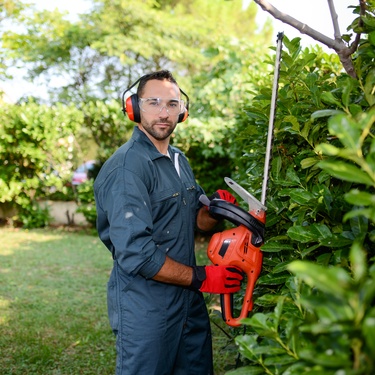
Landscaping is more than planting flowers and mowing lawns; it’s hard physical work that requires precision, skill, and exposure to risky environmental conditions. With heavy machinery, unpredictable terrain, and environmental hazards to contend with, knowing how to reduce the risk of injury in professional landscaping should always be a top priority. By adopting proactive safety measures, professional landscapers can protect themselves and sustain a long, healthy career in the industry.
Undergo Proper Training and Certification
Workers equipped with proper training and certifications are better prepared to handle landscaping tasks safely and effectively. Comprehensive education covering safe equipment operation and hazard identification ensures fewer accidents. Regular refresher courses can also help keep safety standards top of mind, reinforcing best practices as equipment, techniques, or landscapes evolve.
Use the Right Personal Protective Equipment
Personal protective equipment (PPE) is a crucial safety barrier to reduce the risk of injury in professional landscaping. Gloves, safety glasses, hearing protection, and sturdy footwear allow landscapers to work efficiently while mitigating dangers such as cuts, debris-related injuries, and long-term hearing damage. Properly fitted PPE in good condition will significantly enhance its effectiveness on the job.
Perform Regular Equipment Inspections and Maintenance
Faulty equipment can lead to workplace injuries, and landscaping involves a variety of tools and machinery. Conduct regular inspections to ensure that everything from power tools to ride-on mowers is functioning correctly. Worn blades, loose bolts, and electrical issues increase the risk of accidents and hinder productivity. Addressing maintenance needs promptly ensures safer working conditions.
Implement Safe Lifting Techniques
Landscaping often requires moving heavy materials, such as stones, soil bags, and plants. Improper lifting can lead to sprains or severe back injuries. Mastering safe lifting techniques, such as bending at the knees and lifting with the legs, is critical. Additionally, dollies and multi-lift attachments are useful in landscaping to minimize manual strain and prevent injuries on the job.
Stay Hydrated and Take Breaks
Working outdoors under the sun makes proper hydration essential. Dehydration and fatigue can lead to slower decision-making and accidents. Landscapers should ensure access to plenty of water and take regular breaks to recover their energy, especially during hotter months or after intense tasks.
Understand Environmental Hazards
Whether it has slippery surfaces, uneven terrain, or potentially harmful plants and insects, taking the time to assess a worksite beforehand is crucial. Identifying and mitigating risks unique to each project site can save workers from unnecessary injuries.
Safety is essential to maintaining a successful landscaping career. By investing in proper training, using reliable, high-quality equipment, and cultivating a safety-first work environment, you can minimize the risk of injuries while boosting productivity and job satisfaction.
Bio: Casey is a passionate copyeditor highly motivated to provide compelling SEO content in the digital marketing space. Her expertise includes a vast range of industries from highly technical, consumer, and lifestyle-based, with an emphasis on attention to detail and readability.




















